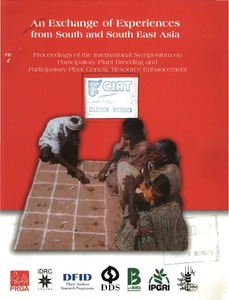Participatory varietal selection in rabi sorghum in India
Sorghum is the third most important cereal crop in India and, over both the rainy (kharif) and the Post-rainy (rabi) seasons, totals a combined area of more than 11 million ha. Rabí sorghum is important for both food and fodder in the drought-prone areas of the states of Maharashtra (3.3 million ha), Karnataka (1.5 million ha), and Andhra Pradesh (0.45 million ha). Genetic enhancement and technology development have doubled the productivity of kharif sorghum. Progress in rabí sorghum has been slower because of several factors, such as more prevalent drought, shoot-fly infestations affecting the initial plant stand, low response of landraces to applied nutrients, and a limited choice of cultivars that have Ihe traits required for adaptation to the rabi season. As a consequence, farmers continue to grow Ihe cultivar M 35-1, developed in 1935, that was a selection from the Maldandi landrace. A participatory varietal selection program for rabi sorghum, to overcome the lack of cultivar choice, is described in this paper.

